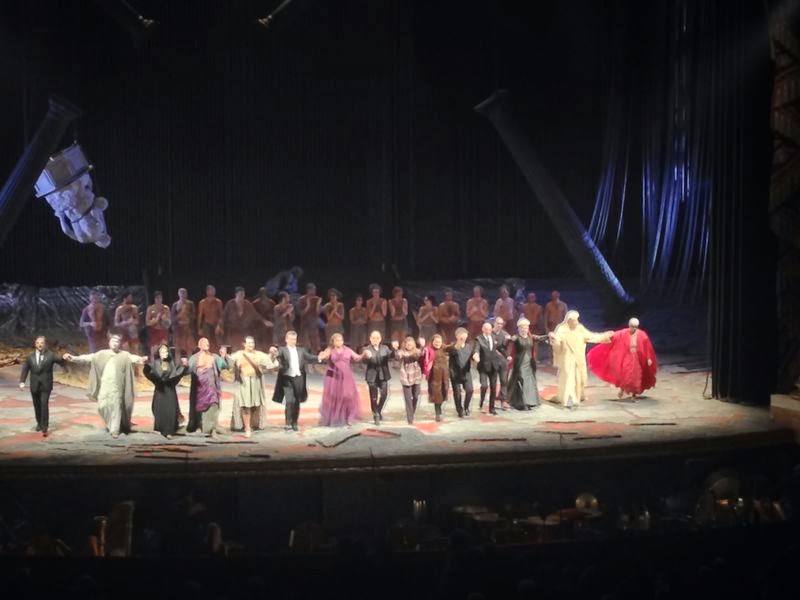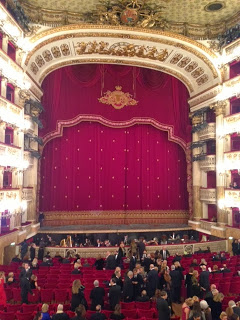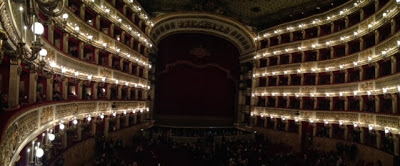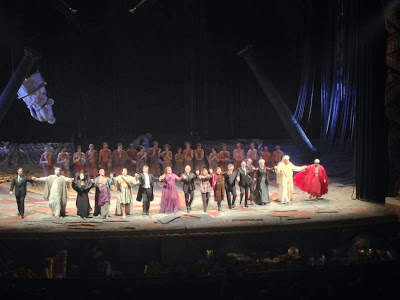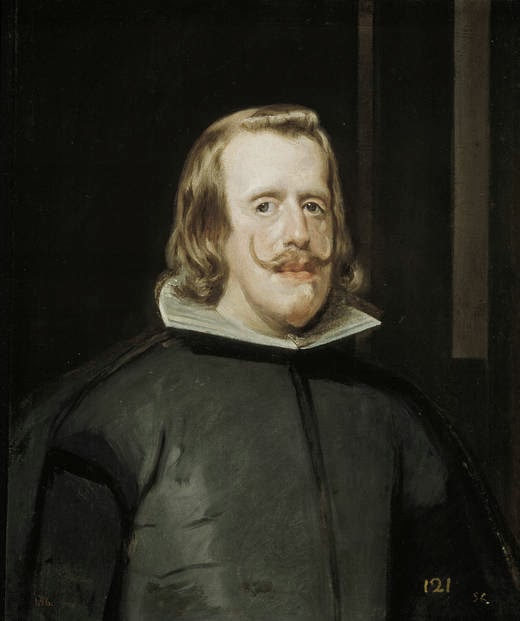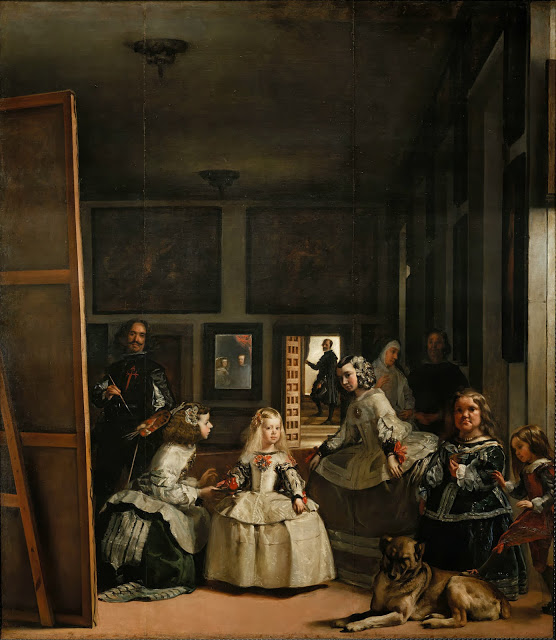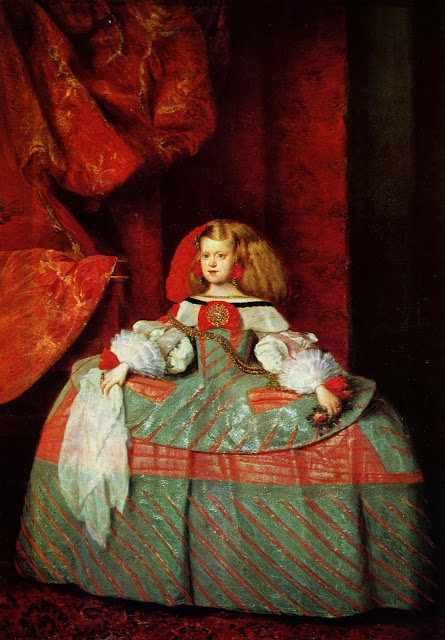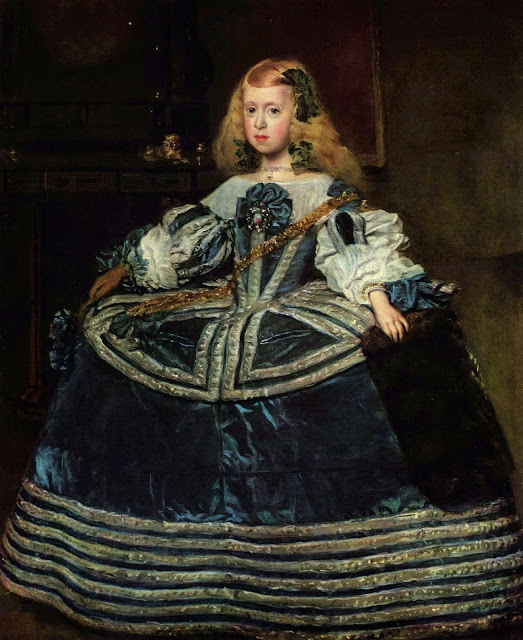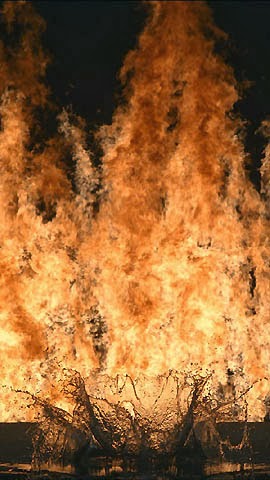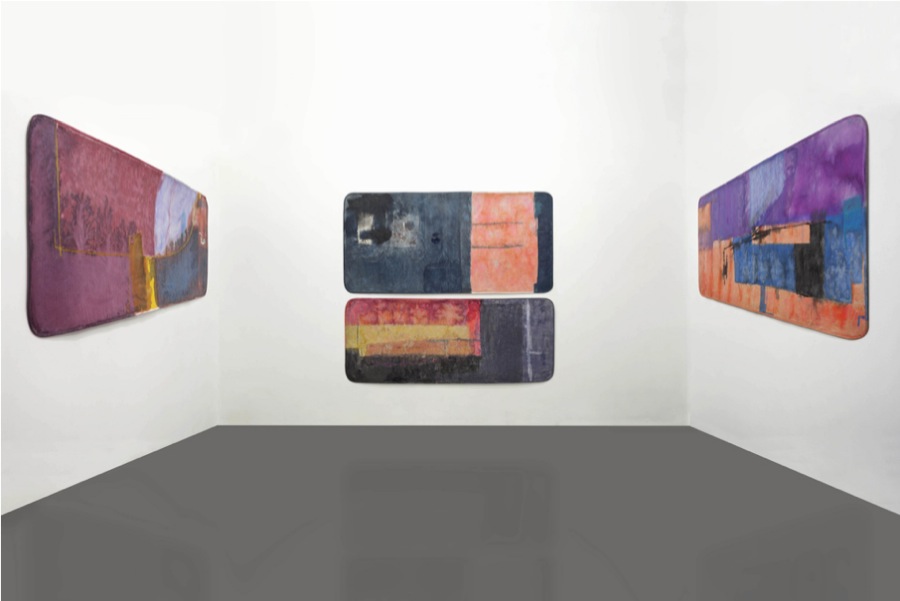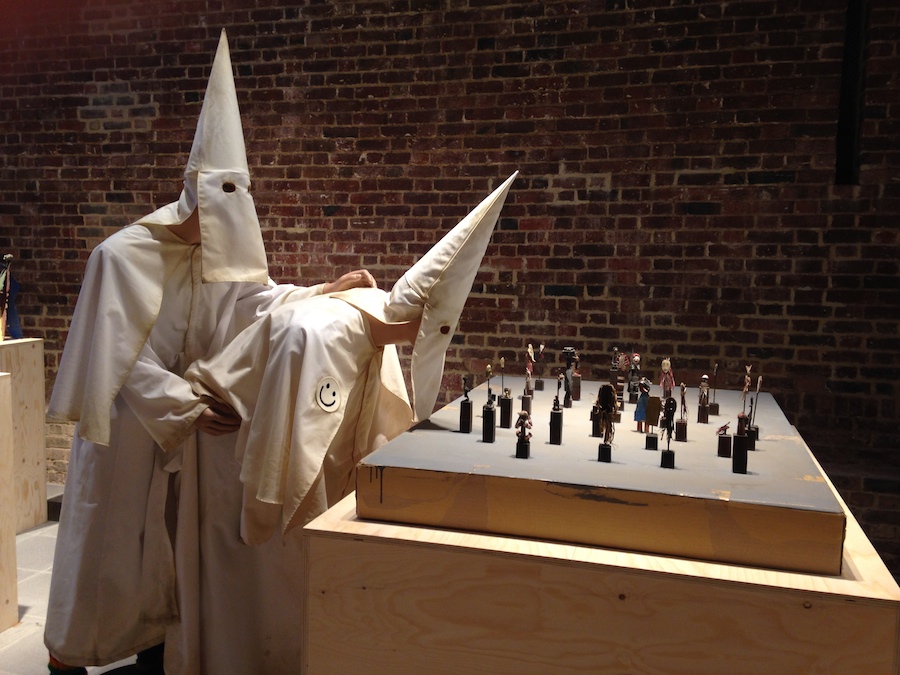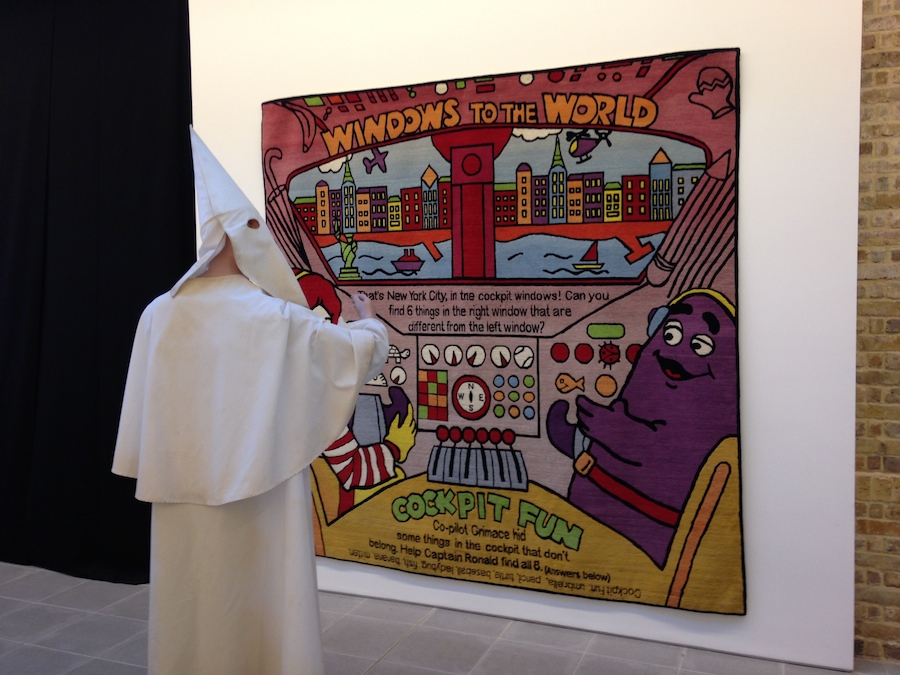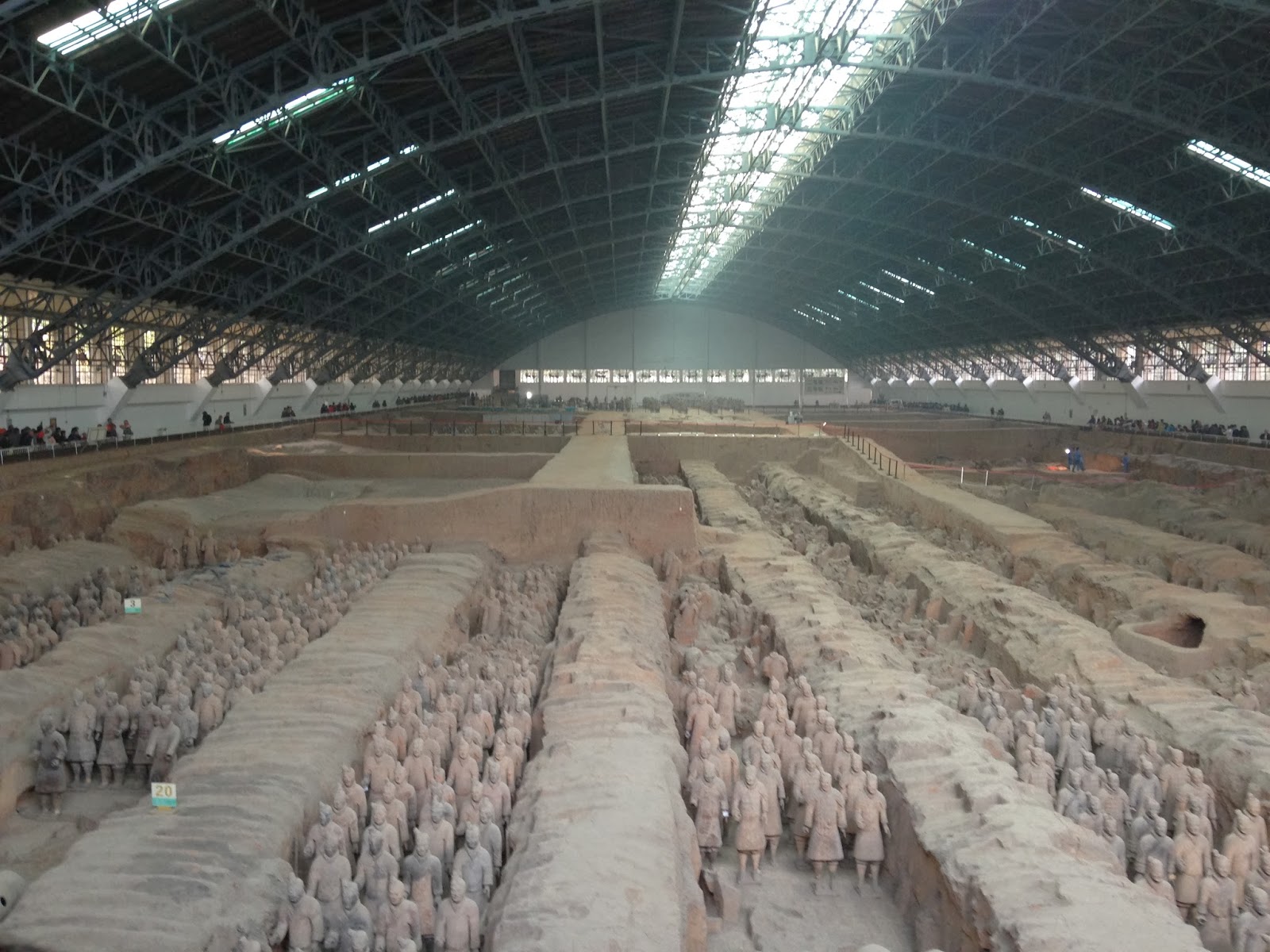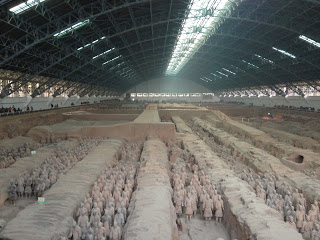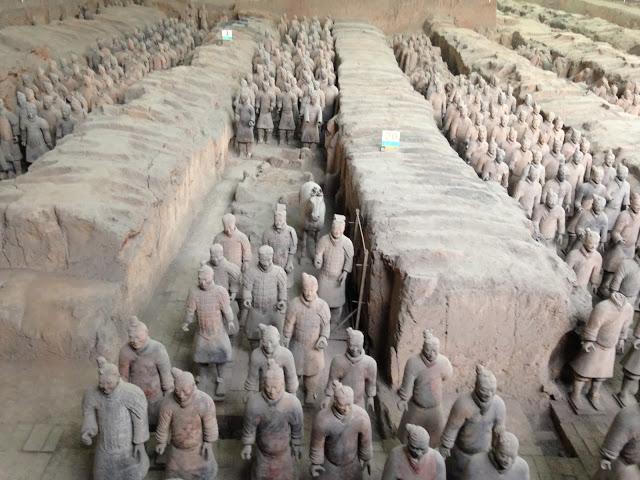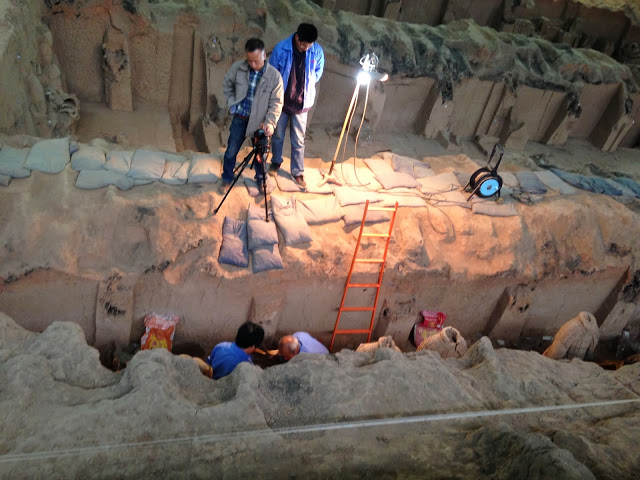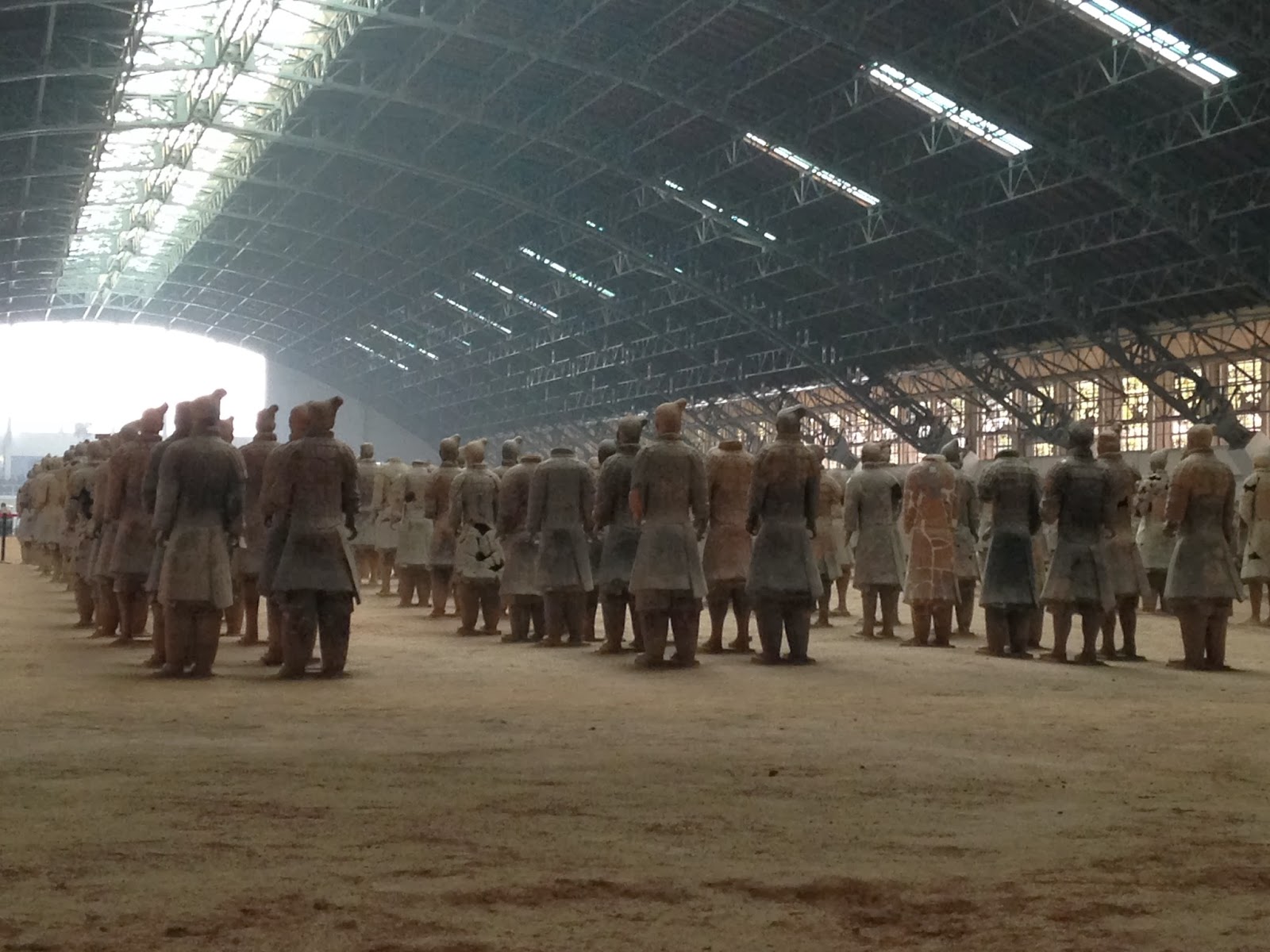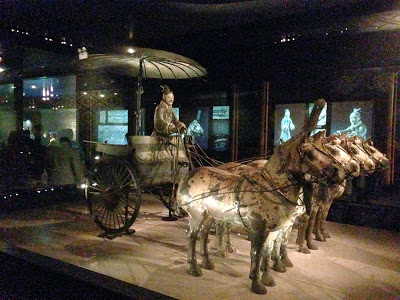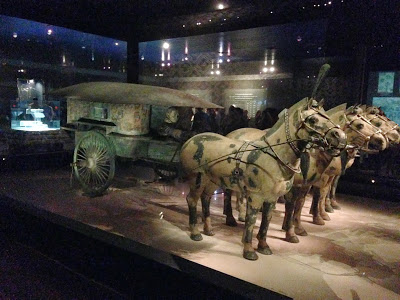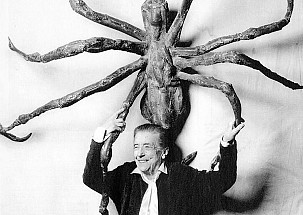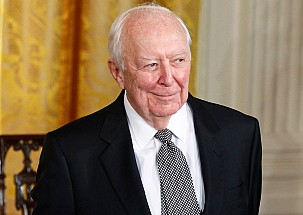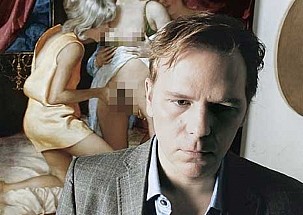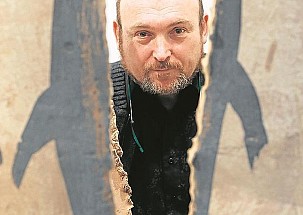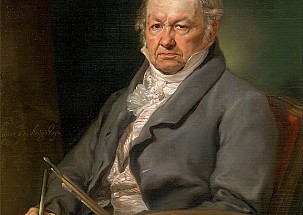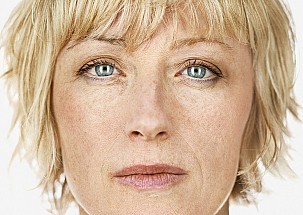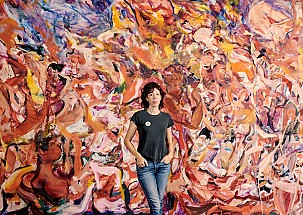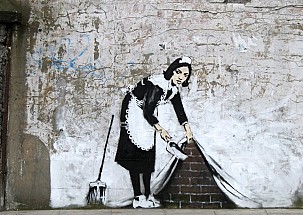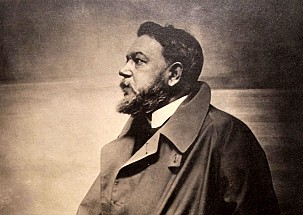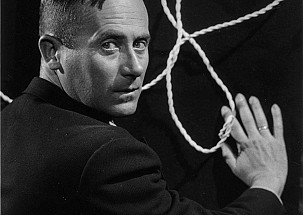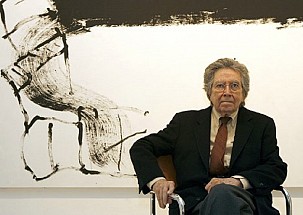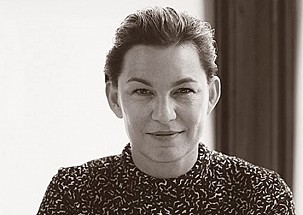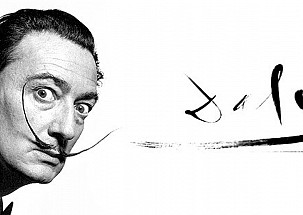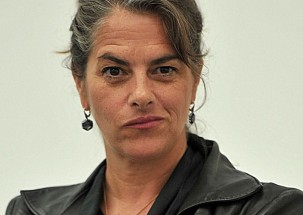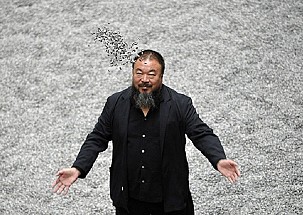- Details
- Written by Alejandra de Argos
Last night was the premiere of Aída at San Carlo's Theater to mark the bicentennial of Giuseppe Verdi's birth.
The special thing about this performance is that it was commissioned by Franco Dragone, theater director, well known for his work with the Cirque du Soleil.
The staging was simpler than other productions of this Opera and much moré timeless; Ancient Egipt themes were intermingled with classic ballet and contemporary tecnological effects.
The staging was magnificent, more minimalist but also more intimate.
The cast included the great Lucrecia García in the part of Aída, Jorge de León as Radames, Ekaterina Semenchuck in the role of Amneris and Marco Vratogna as Amonasro. It also included the Opera legend, bass singer Ferrucio Furlanetto in the role of Ramfis.
The orchestra and the choir of San Carlo's Theather made for an outstanding evening.
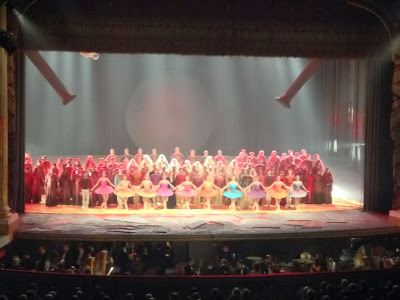
- Details
- Written by Alejandra de Argos
Velázquez and the family of Felipe IV represents an unmissable experience of art in all its aesthetic beauty. After visiting the Chapman retrospective, I was deeply thankful for such visual delicacy. The exhibition is small, consisting of 15 paintings by Velázquez during the last 11 years of his life. It was precisely during this time that he decided to specialise in portraits. The rest of the exhibition contains a selection of paintings by his successors Juan Bautista Martínez de Mazo and Juan Carreño. It's a pity that Mazo's paintings, which are copies of Velázquez's ones, are displayed next to those of the great master, as although they are of a high standard in their own right, they inevitably pale in comparison to the original.
From the first room of the exhibition I would particularly recommend the sheer strength of the portrait of Pope Inocencio X, painted during his second and final visit to Italy. This is smaller in size than the first one he painted, - the latter being one of the painter's masterpieces - but still retains all the expressive intensity of the previous one.
The other portraits are of Felipe IV, his wife Mariana of Austria - whom he had recently married - and his sons. His use of colour is extraordinary, considering how limited his palette was. His meticulous pictorial technique, visible in suits, curtains and decorative elements, is extremely precise, creating a wonderful sense of realism and beauty. But what really stood out for me was how he handles his characters' eyes and stares, giving each character a life and personality of their own - this is what most differentiated the copies of his successors from his own.
- Details
- Written by Alejandra de Argos
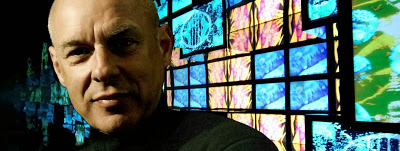
Musician Brian Eno, best known as member of Roxy Music and creator of the ambient sound, is exhibiting his sound-and-image installation at the Alcalá 31 gallery.
77 Million Paintings is a unique audiovisual experience - it would take 400 years to see every possible combination of images projected on the 12 screens. Visitors sit on a sofa and variations of images almost without noticing the subtle changes, while listening to calm, peaceful sounds which leave one in a state of contemplation and introspection.
As the artist himself perfectly describes, "It is a space where viewers surrender to the images, colours and music around them - their senses are sharpened, and they reach a state of complete tranquillity where the only thing that's possible is to just let oneself go and give in to the experience."
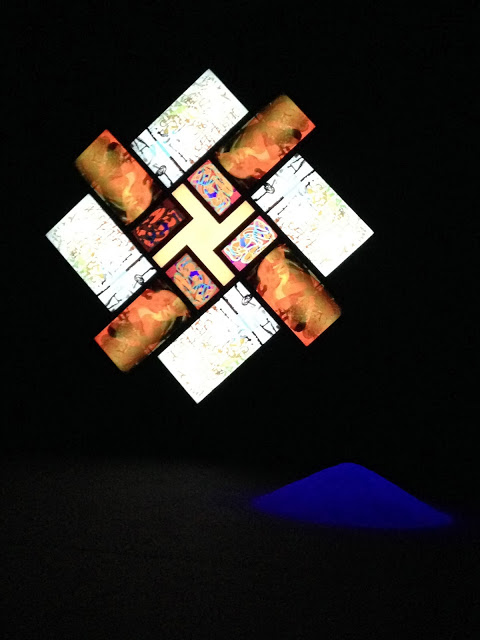
- Details
- Written by Elena Cué
Author: Elena Cué
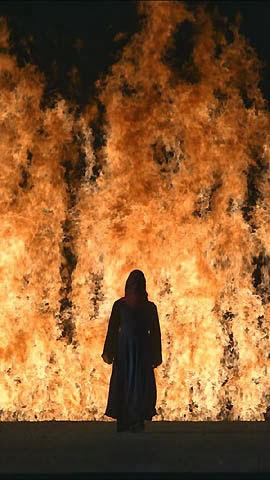
Wagner’s magnificent opera, performed at the Teatro Real, saw the composer’s intensity and passion merged with Bill Viola’s beauty and subtlety, greatly enhancing the work.
Of particular note were Marc Piollet’s music direction, the Lithuanian Violeta Urmana’s powerful voice (in the role of Isolde) and Franz-Josef Seling’s masterful performance as King Marke. Bill Viola's video-art played a prominent role, thanks to director Peter Sellars' understated scenery and the seamless integration of his video-art into the opera.
Love, desire, emotion, drama, all expressed with an immediacy that only music, of all the arts, is capable of. The expressive music together with Viola’s unique visual poetry, form a powerful creative combination.
Love, desire, emotion, drama, all expressed with an immediacy that only music, of all the arts, is capable of. The expressive music together with Viola’s unique visual poetry, form a powerful creative combination.
Wagner, composer from the Romanticism era, raises Tristan und Isolde to its pure Romantic essence, praising emotion over reason. A romantic, like Tristan, lives and is consumed by his emotions, and perishes from his desires. In this context, death is understood as the beginning of life.
To yearn, to yearn!
Dying, still to yearn,
not of yearning to die!
What never dies
now calls, yearning
to the distant physician
for the peace of death.
No healing,
no sweet death,
can ever free me
from the pain of yearning:
nowhere, ah nowhere
can I find rest:
night casts me
back to day
so that the sun can for ever feast
its sight upon my suffering.
According to Schopenhauer, desire and longing are at the centre of human life: we are made up of wants and needs. Our lives are but a fight for survival towards an irreversible end (death). But our desires and aspirations also lead us to suffering, Schopenhauer says. To finally reach our goals is to experience something even worse than death: emptiness and boredom. Life is nothing but a pendulum swinging between need and tedium.
The influence that Arthur Schopenhauer’s thinking had on the composer is well documented. Buddhism, widely present in the philosopher’s writings, was also an influence on Wagner while he was writing the libretto for Tristan und Isolde (as well as composing the music for his operas, Wagner would always write his own librettos).

The question of spiritual influence is in fact something else the two have in common: Viola, whose roots can be traced back to the spiritual traditions of Buddhism, Christianity and Islam, uses video-art as a channel for self-discovery, evident in the mystical visuals by the artist that complemented the opera.
The four elements - fire, water, air, earth - feature prominently in his work, as well as the concept of decelerating time and an aesthetic style influenced by artists such as Zurbarán, Velazquez, Goya, Ribera, el Bosco… Water, essential for life, is often used symbolically in his work since he almost drowned at the age of six. He speaks of this experience as calming and peaceful, not as tragic or fearsome. Water is indeed the great constant throughout his videos: life, movement, birth, cure, pleasure, pain, death, mystery...
The four natural elements were also how the pre-Socratics explained the origin and cause of the cosmos.
Throughout the performance, Viola's videos gradually aligned more and more with the opera's storyline, becoming one and the same in the last act - the best, in my opinion.
“A lot of my work is based on bringing opposites together. White and black, light and darkness, fire and water, day and night, man and woman, birth and death. These are the elements that Man has been experiencing since the beginning of time.” Bill Viola.

Act One began with sea scenes and images of Shakespearean actors (some nude) that Viola used as symbols to represent the characters of the story. These were followed by superb scenes of the titular lovers of great intensity, romanticism and drama, whereas Viola's screen depicted a purification ritual of the main characters, water symbolizing the beginning of life and atonement.
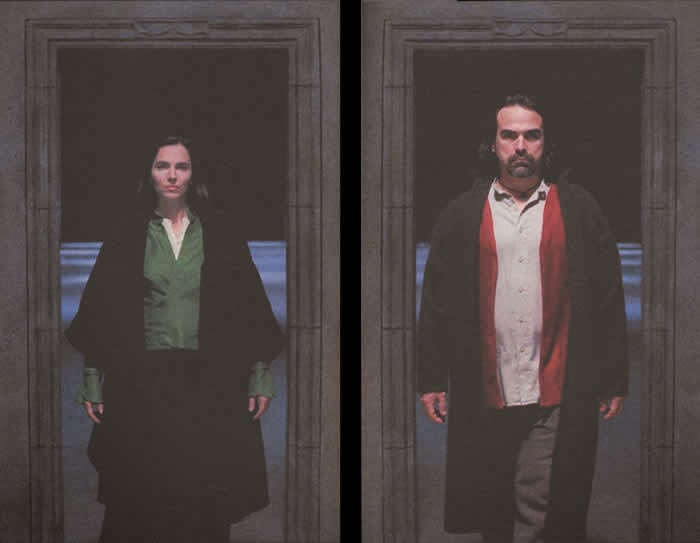
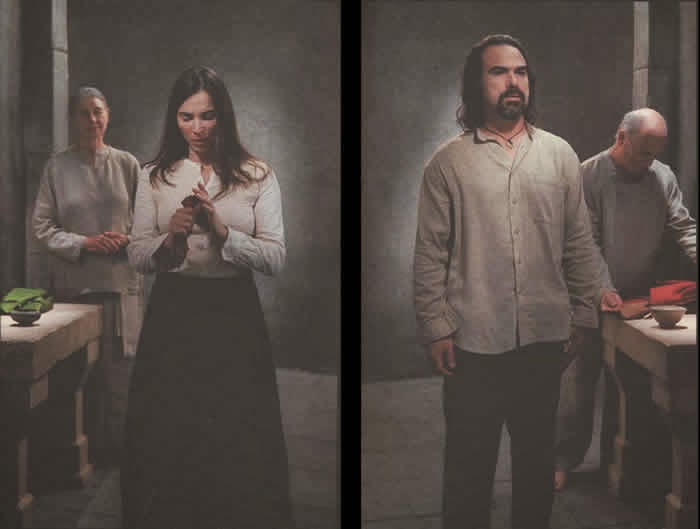
The next element was fire, used here as a symbol of the fight between life and death - great scenes of huge flames burning away accompanied by intense music.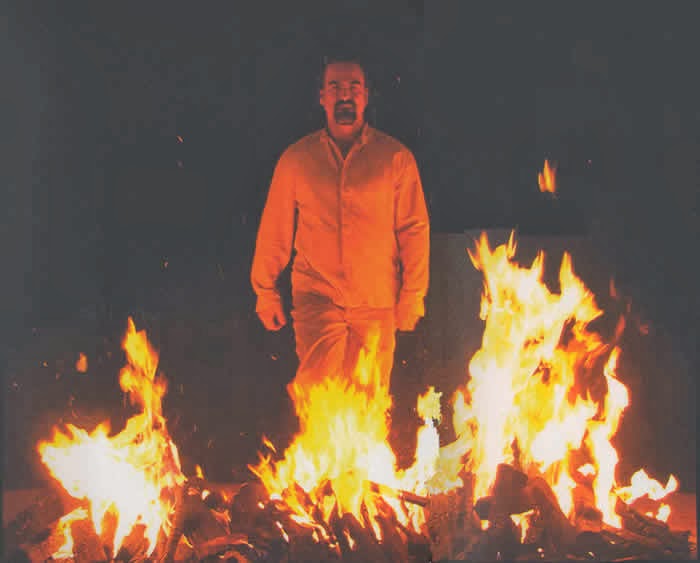
The water scene where Tristan’s dead body rises up to the heavens was the climax of a sublime Bill Viola at work.
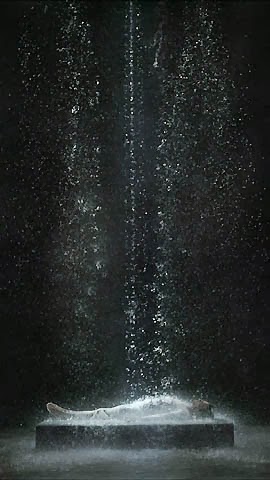
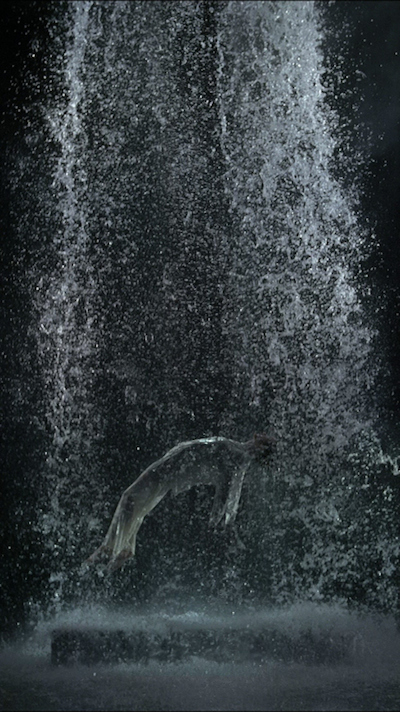
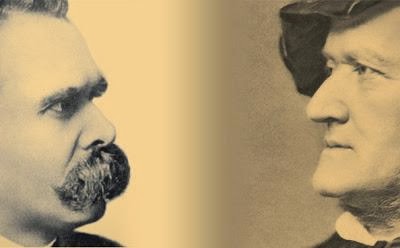
Friedrich Nietzsche was a composer as well as a philosopher. His troubled relationship with Wagner went from deep admiration after discovering his Tristan und Isolde, to terrible hatred and the subsequent end of their friendship. Nietzsche did not take kindly to Wagner’s Parsifal and its strong religious centre, especially its Christian idea of compassion.
All qualities are united in music: it can lift us up, it can be capricious, it can cheer us up and delight us (...). Its main purpose, however, is to lead our thoughts upward, so that it elevates us, even deeply moves us (...). Music often speaks to us more deeply than the words of a poem, as it is able to enter into the smallest corners of our heart.” F. Nietzsche.
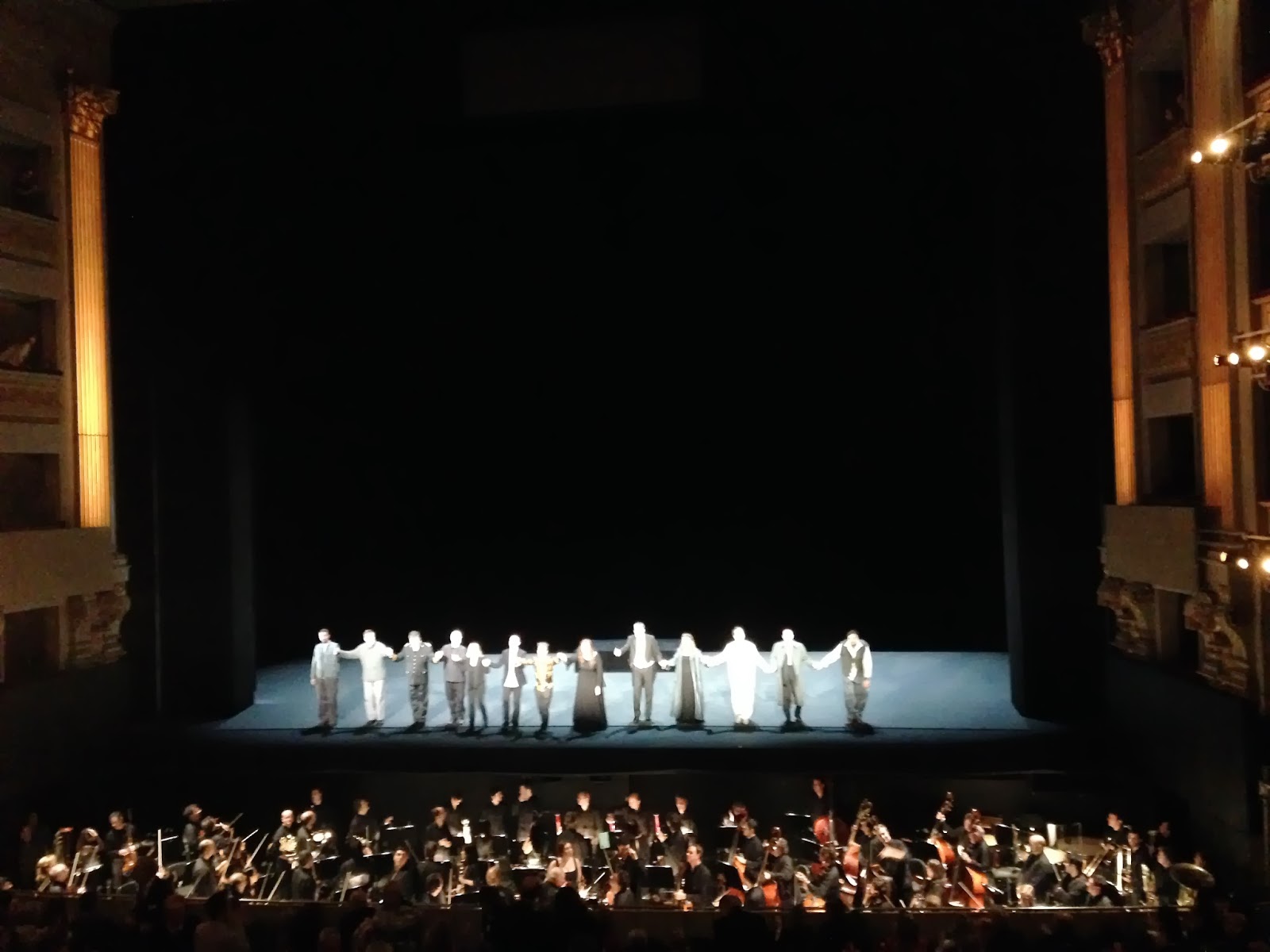
- Details
- Written by Matteo Mottin
|
Autor colaborador: Matteo Mottin |

|
Interview with Henrik Olai Kaarstein in occasion of his exhibition ‘Mothers’ at T293 Gallery (Naples)
|
|
|
HENRIK OLAI KAARSTEIN, ‘MOTHERS’, INSTALLATION AT T293 NAPLES,COURTESY T293, ROME-NAPLES FOTO: MAURIZIO ESPOSITO |
ATP: In “Turning and Returning”, your previous exhibition with T293, you were showing “material collages” made with sheets and towels “found” in hotel rooms and saunas and assembled so as to fill the typical aseptic and empty void of those places. Is there a connection between these works and the ones you show in “Mothers”?
Henrik Olai Kaarstein: I’m drawn to the intimate, private and sexual connotations to these materials. They are heavy with information, insinuation and emotion even before I manipulate them. Making a fabric ”dirty” with paint and colours. Putting my hand on them so they never can be clean or fresh again. I guess in ”Turning and Returning” the idea of collecting and gathering materials was more present than in my newer works. As I never really was that concerned with the personal narrative of these objects, or the gesture of putting these everyday objects into a gallery space, I moved away from it. It’s always been more about the physical qualities of the fabrics that I didn’t have control over and had to work with and work around.

HENRIK OLAI KAARSTEIN, ‘MOTHERS’, INSTALLATION AT T293 NAPLES, COURTESY T293, ROME-NAPLES FOTO: MAURIZIO ESPOSITO
ATP: There’s been a clear evolution in your works, from the ones presented in “Projectile Weapons”, through “Idea is the object” at D’Amelio Gallery, to “Mothers”. Can you tell us something about this path?
H.O.K.: The word path is a bit farfetched. Of course there’s been progression and development. It’s getting more important for me to look back at earlier works as a way of evolving, retrospective investigation. It’s nothing complacent with a bit of self-referentiality. It’s almost like admitting defeat and accepting that there are still issues that need to be examined.
ATP: ”Mothers” is a title that evokes feelings at the same time personal and impersonal. Can you explain us the reason behind this choice?
H.O.K.: I like writing words down as a method of working and framing my work. It’s part of a notebook for sketching and ideas. Most of my ”ideas” are not visual illustrations, but come more in the form of sentences, quick assembling of words etc. I like cementing ambiguities on paper. Looking at the title “Mothers” standing alone on a piece of paper was odd. It has a great duality to it like you mentioned. It is a warm word, but also feels like a cold title. It’s harmful and dangerous somehow. Like a pack of angry lionesses. In the specific situation of the exhibition, the intimacy of the materials it turns perverse and incestuous. The plural form of the word swiftly disarms all of these connotations with impersonality, like it implodes into nothing and is suddenly pointing everywhere. Mothers represents acceptance and embracement and therefore also functions as a wink to what I describe as ”aggressive femininity” in the exhibited works and ”sisterhood” of the seriality. It is a crowded, yet democratic installation. No individual work is allowed to be more important than its siblings.
ATP: The works in the exhibition are characterized by simple basic materials such as towels and mattress covers. On these everyday objects you paint enigmatic and ambiguous landscapes. Can you tell us about the link between these two parts, the base and the paintings?
H.O.K.: I’m not sure if there’s much to tell. The surfaces lie on my dirty floor so I can circle around it, occasionally diving in after a decision is made. I just add with what makes sense, puzzling together a solution and struggle to make all aspects connect. A lot of water is mixed with the paint. It’s a long process of water damage and drying, hiding mistakes and sometimes seeing mistakes as success. Repeat, add and rework as many times as I feel necessary. There are a lot of limitations when you work on something mass-produced. I need limitations to focus and control the visual delegation. Continuously adding liquids to objects made to repel and suck up moisture that never will be clean and pure again was the starting idea. Performing as aesthetical objects instead of functioning. It’s a great combination of sad and sexy.
ATP: From the text that goes with the exhibition: “powerful resources and will are used to lay bare and point out the existence of repressed information”. What kind of repressed information do your works hide?
H.O.K.: “Prejudiced longings”, are the two last words of that press text. I just want to point out where. I’ve never been a who-what-why-man.
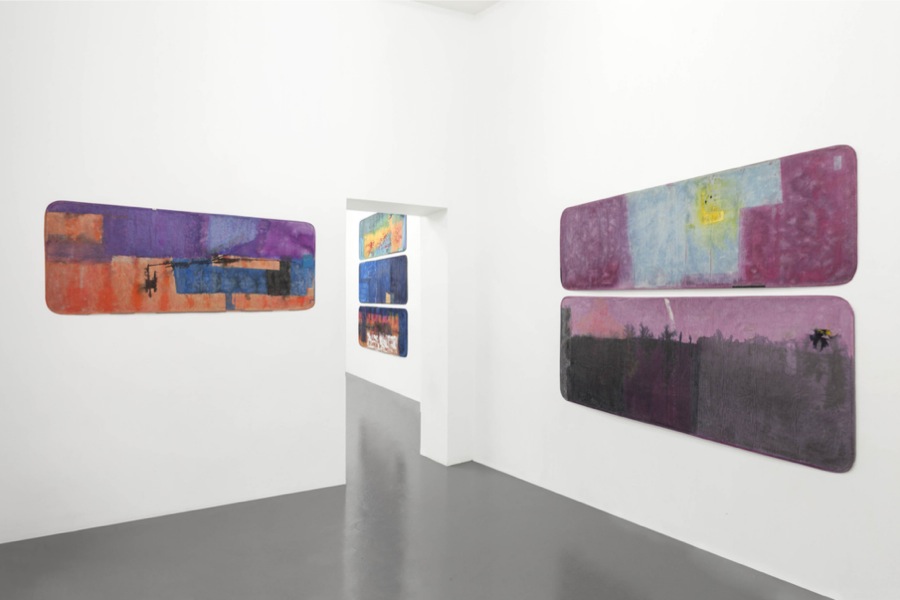
HENRIK OLAI KAARSTEIN, ‘MOTHERS’, INSTALLATION AT T293 NAPLES, COURTESY T293, ROME-NAPLES FOTO: MAURIZIO ESPOSITO
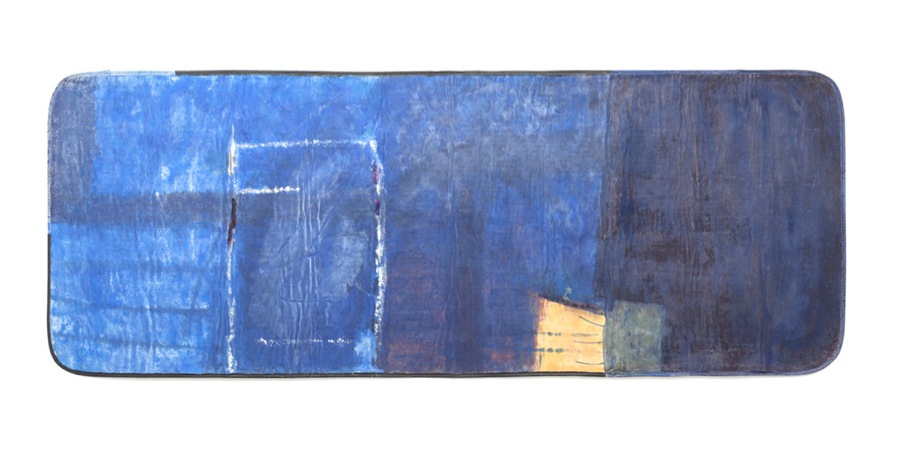
HENRIK OLAI KAARSTEIN, AND YOU DESERVE ALL 5, 2013, ACRYLIC PAINT, IRIDESCENT MEDIUM, ACRYLIC GLUE AND SILICONE ON MATTRESS PAD : PITTURA ACRILICA, MATERIALE IRIDESCENTE, COLLA ACRILICA E SILICONE SU COPRIMATERASSO, 75 X 200 CM, COURTESY T293, ROME-NAPLES FOTO: MAURIZIO ESPOSITO
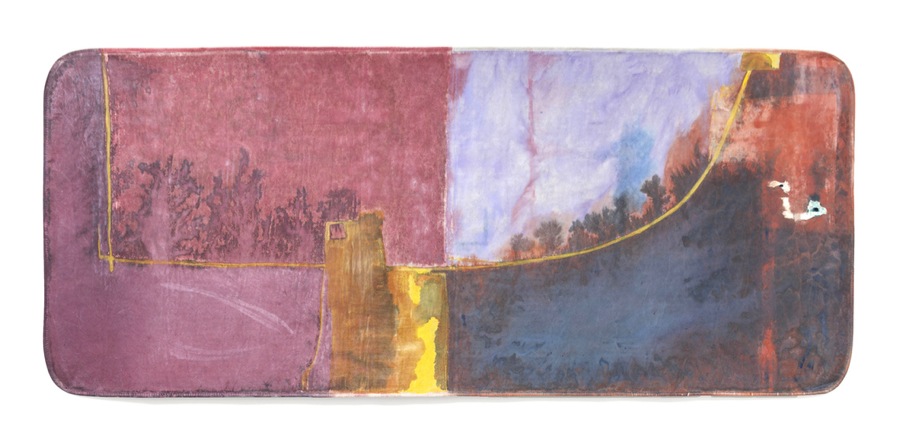
HENRIK OLAI KAARSTEIN, AND YOU OWN ALL 4, 2013, ACRYLIC PAINT, VINYL PAINT, ACRYLIC GLUE, IRIDESCENT MEDIUM ON MATTRESS PAD : PITTURA ACRILICA, PITTURA VINILICA, COLLA ACRILICA, MATERIALE IRIDESCENTE SU COPRIMATERASSO, 85 X 200 CM, COURTESY T293, ROME-NAPLES

- Details
- Written by Alejandra de Argos
 |
| Jake y Dinos Chapman. Foto:A de Argos |
The Chapman brothers’ “Come and See” exhibition invites viewers to reflect on the meaning of art and its countless ramifications.
The Chapmans are part of the Young British Artists group, and a large part of their work is inspired by the Old Master Francisco de Goya. The artists’ desire to recreate Goya’s “flat” paintings in three dimensions is evident among the work on display.
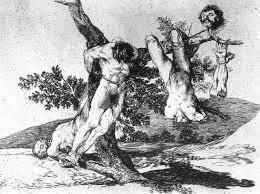 |
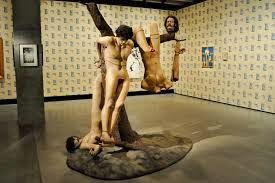 |
These photos show Goya’s etching on the right, and the related Chapman sculpture on the left. Although these works were not included in this exhibition at London’s Serpentine Gallery, it does go to show the relevance and modernity of Goya’s work, which dates back to around 1810.
A number of years ago the two brothers obtained one of Goya’s series of anti-war etchings titled “The Disasters of War”, and replaced the victims with clowns and puppets: an example of the irreverent black humour so often present in their work.


What surprised me the most in this visit, however, was seeing a group of people with Down syndrome accompanied by their carers. I don’t doubt that such an exhibition could be meaningful to them, although I struggle to see how. At one point one of them insisted that their carer take a photo of this piece for them.
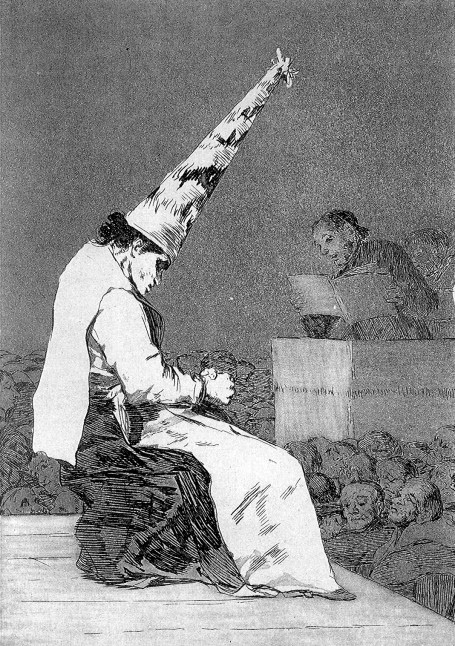 Sex, religion, morality and culture are the main themes dealt with in their work, and their tone is grotesque, aggressive, provocative. In particular, references to morality can be seen in a series of life-size figures dressed in white tunics and hoods, looking down at what lies before them - a nod to Goya’s etchings depicting the Spanish Inquisition (this dress is also typically seen among penitent brotherhoods during Spain’s Holy Week). With these etchings Goya was speaking out against the Inquisition and superstition in general. The Chapman brothers are also creating an analogy with the robes worn by the Ku Klux Klan, the American far-right white supremacy group. This serious ideological tone is somewhat eased by the smiley faces present on the tunics, and by their grotesque sandals and colourful socks.
Sex, religion, morality and culture are the main themes dealt with in their work, and their tone is grotesque, aggressive, provocative. In particular, references to morality can be seen in a series of life-size figures dressed in white tunics and hoods, looking down at what lies before them - a nod to Goya’s etchings depicting the Spanish Inquisition (this dress is also typically seen among penitent brotherhoods during Spain’s Holy Week). With these etchings Goya was speaking out against the Inquisition and superstition in general. The Chapman brothers are also creating an analogy with the robes worn by the Ku Klux Klan, the American far-right white supremacy group. This serious ideological tone is somewhat eased by the smiley faces present on the tunics, and by their grotesque sandals and colourful socks.
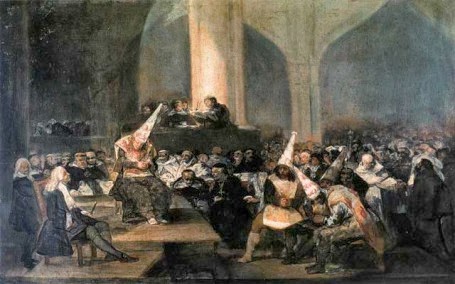
What pushed me to visit an exhibition displaying humanity’s darkest moments? Mostly out of a sense of curiosity, influenced by a powerful art market whose job it is to create tastes and spark our interest. I wanted to know why this kind of art had become so successful, why it had achieved critical acclaim. And secondly, the art on display here forces me to reimagine my own ideas of political correctness and beauty - it’s taboo-shattering, and provocation is a key component of the art of our day. Having said that, once inside the exhibition I found the crudeness a little excessive. I ended my visit feeling that it was all too showy, too self-aware - the same artist-viewer dialogue of social and cultural critique could have been established in a much less aggressive manner.
It’s difficult to explain. What one finds here is ugly, aggressive, violent and unpleasant. The art mercilessly forces you to face the basest and crudest sides of human beings, leaving out civilization, culture or any of the other more constructive capacities of humanity which differentiate us from the rest of the animal kingdom. A real-world depiction, in all its rawness, of Twain’s quote: “Of all the creatures that were made, man is the most detestable. Of the entire brood he is the only one--the solitary one--that possesses malice.”
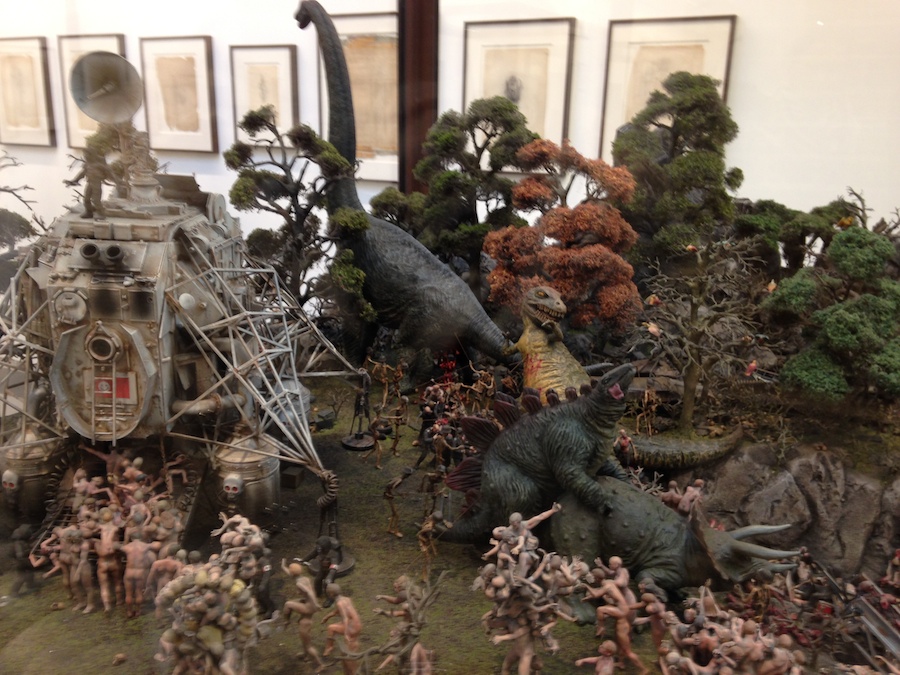

Of all the exhibits on display, I most enjoyed the oil paintings. The majority of them belong to the White Cube gallery.
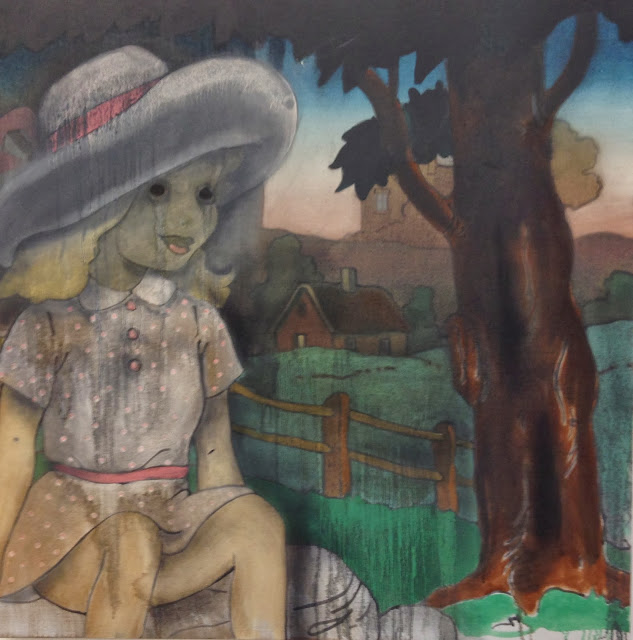

One of the rooms was dedicated to works made of cardboard.
|
|
|
Foto: Alejandra de Argos |



Duchamp famously said that art is in the eye of the beholder, not in the artwork itself. Art is and has always been a means of communication between the artist and the viewer. Francisco de Goya, the Chapman brothers: one message, two centuries...
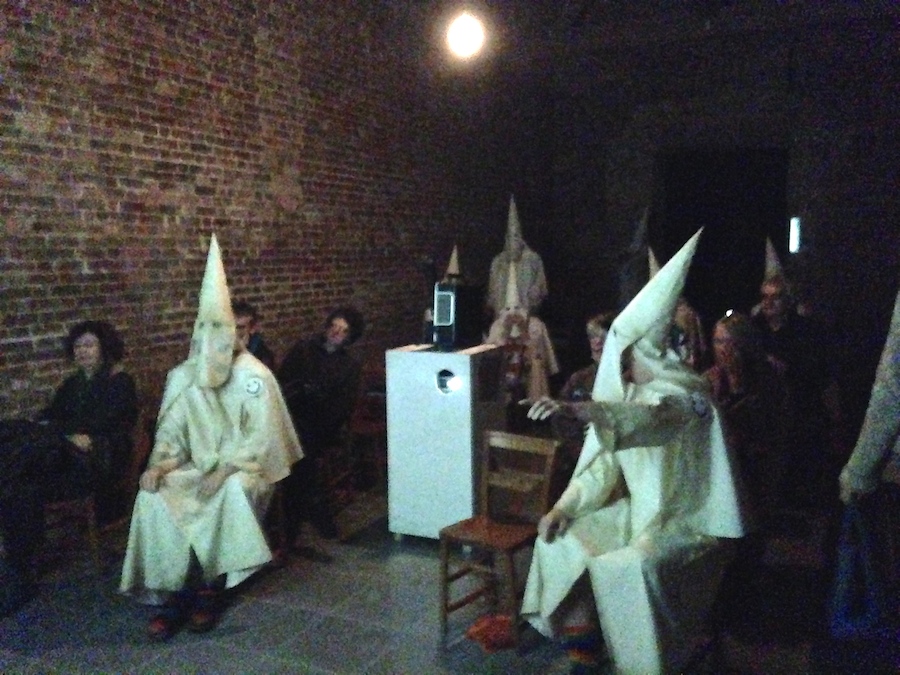
Jake and Dinos Chapman. "Come and See". From November 29, 2013 to February 9, 2014.
- Details
- Written by Alejandra de Argos
|
|
|
Foto: Alejandra de Argos |
The Terracotta Army (or "Terracotta Warriors and Horses") is considered the Eighth Wonder of the World and was ordered to be built by the first Emperor of unified China, Qin Shihuang, who began the construction of the mausoleum at the tender age of 13.
Qin Shihuang (259 BC - 210 BC) was responsible for bringing an end to the feuds, achieving the unification of China, building the Great Wall as a defence against the Huns and unifying Chinese thought and culture of the time into a coherent system.
|
|
|
Foto: Alejandra de Argos |
Upon arriving at Xian I was greeted by a great fog, probably similar to London’s Great Smog of 1952. Outdoor visibility was extremely low due to China’s reliance on high-pollution energy sources such as carbon.
Just after landing, I drove for about an hour to visit this large museum, which is made up of three large pavilions, or pits, containing the remains of the army, and a hall containing two bronze carriages, together with information on the museum’s history.
I began my visit at the pit named N1, the largest of the three measuring 230m in length. It was certainly an impressive sight upon entering the space: a vast number of lifesize soldiers perfectly lined up, each with its own personality (their facial expressions are all different). This pit holds the infantry and war chariots.
 |
 |
| Foto: Alejandra de Argos | Foto: Alejandra de Argos |
The N2 pit houses over 1,300 warrior figures, horses and chariots. N3 is the smallest and it is believed to represent the army’s General Staff.
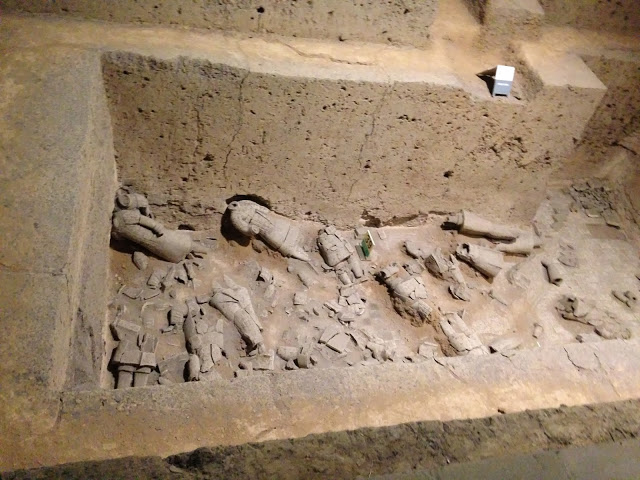
What I found interesting was that even before the construction of the Emperor’s mausoleum, there was already a tradition in place among the feudal lords of burying lifesize terracotta figures near their tombs or mausoleums. Unlike these figures, however, those of the Emperor Qin Shihuang were made to a much higher standard, thanks to better quality clay mix and the use of high-temperature ovens. Coloured pigments would then be added at a later stage. What is most fascinating, however, is that the bronze weapons were covered in a chrome coating to preserve the metal from corrosion, a technique not seen in Europe until as recently as 1930.
As our guide explained, the Emperor Qin Shihuang sent 700,000 workers into forced labour for the construction of the mausoleum. On the day of his burial, upon order of the new Emperor, over 10,000 people were also buried, as well as all non-childbearing concubines and a large number of construction workers.

In 1974, purely by accident, a group of farmers happened upon some broken remains of the figures while digging a well, and a team of archaeologists was brought in immediately to begin the excavation work. It is thought that there are still around 8,000 figures buried in the earth.
|
|
|
Foto: Alejandra de Argos |
Specialists are currently at work to recover the soldiers, so that new restoration work can be carried out. There are still thousands left to be unearthed, including the Emperor’s main tomb.
|
|
|
Foto: Alejandra de Argos |
The museum contains these two bronze carriages decorated in gold and silver, which together made up the Emperor’s funeral procession. The first carriage’s driver would be travelling on foot, and its role in the procession was to clear the way ahead, whereas the second carriage was used to carry the Emperor’s soul. The two carriages are beautifully displayed here, two precious jewels buried under ground for over 2,000 years (the restoration work alone took eight years). The horses were painted in white in order to protect the bronze from rust.
|
|
|
Foto: Alejandra de Argos |
|
|
|
Foto: Alejandra de Argos |
Recommendations:
For those who cannot travel to see the Xian warriors, Madrid’s Fernán Gómez-Centro Cultural de la Villa is hosting the exhibition 'Terracotta Army' until March 2, 2014. A part of the N1 pit has been reproduced here and can be visited; the centre is also showing an informative documentary about the terracotta army, which may well be the same that is shown to visitors in Xian.
|
|
|
Foto: Alejandra de Argos |


